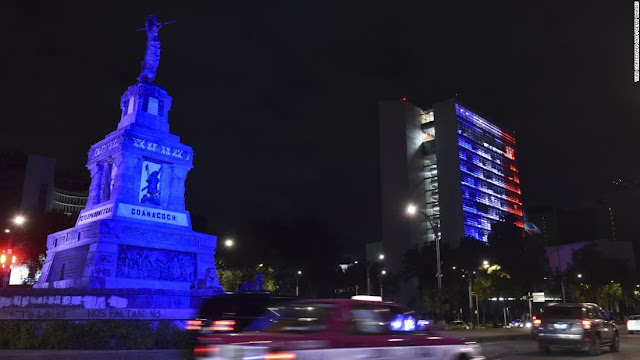....being inspired by
Still Lifes
Still Lifes
La Pouyette - November 2015
*
STILL LIFE AS A MODEL OF SPACETIME
by MATILDE MARCOLLI
"As it is well known, the other technical name of the "Still Life" genre is Vanitas.
.
This word more aptly describes the philosophical nature of these
deceivingly simple images of compositions
of objects of everyday life, as conceptual representations of the nature of time.
Vanitas refers primarily to the transient nature of time,
the fugitive instant, the brevity of life, the ephemeral pleasure of enjoying
the reality of instantaneous moments that do not and cannot last."
text source here of objects of everyday life, as conceptual representations of the nature of time.
Vanitas refers primarily to the transient nature of time,
the fugitive instant, the brevity of life, the ephemeral pleasure of enjoying
the reality of instantaneous moments that do not and cannot last."
La Pouyette - November 2015
*
La Pouyette - October 2015
"Time as a collection of instants"
First and foremost, there is the idea, which all of us maintain,
that time is a collection of instants, each a still image,
which is immediate and immanent but without extension:
the very idea of instantaneous - something which does not last......
....which exists only in a brief instant of time..."
Matilde Marcolli - text source here
*
*
*
Luis Meléndez (1716-1780)
regarded as the leading Spanish still-life
painter of the 18th century.
He was one of a family of painters, but
his promising career in figure painting
ran aground after his father's
dispute with the Academy
in Madrid.
He petitioned the King on two occasions to become a court
painter,
but failed to gain an official post, and died in poverty.
Luis became known for his still life paintings,
executing nearly fifty "bodegón" paintings from 1759 to 1772.
*
his family moved to Spain soon after.
His father, uncle, brother and two sisters were all painters.
His father, Francisco, was instrumental in founding the Royal Academy in Madrid in 1744,
and his son's self portrait of 1746 shows him as a promising student there.
Following a dispute, both father and son were expelled from the Academy
and turned to miniature painting in the 1750s.
*

Luis's still-lifes were painted in a decorative style, typical of Spain at that time.
Artists Juan Sanchez Cotán and Francisco de Zurbarán started the bodegón style.
*
Meléndez painted his still-lifes with a serious sense of reverence.
The grand themes did not attract him, but the ordinary stuff of every day life,
which he studied with an enormous visual interest in the every day normality of form.
Though Luis was not the first, nor the last to paint bodegón's,
his works show tremendous skill and mastery of the subject.
text source: here
Still life with Oranges, Walnuts and Boxes of Sweetmeats (National Gallery, London)
In addition to the oranges and walnuts, on the wooden shelf there are chestnuts, a melon, earthenware jugs, a small barrel and some circular and oblong boxes. The jugs probably contain wine, while the barrel possibly contains olives. The round boxes were normally used for cheese, while the rectangular ones were used for sweets, such as 'dulce de membrillo', a thick quince jelly eaten in slices.
Meléndez painted this picture at the time when he was hopeful of becoming court painter, having very recently completed a series of still lifes for the Prince of Asturias, the son of Charles III. He was, however, unsuccessful.
text source: here
Self-portrait, oil on canvas, 1747, Musée du Louvre
*
Luis Meléndez's works are now in major museum collections,
including the Museo del Prado and the National Gallery of London
*
*

La Pouyette - November 2015
*

La Pouyette - October 2015
*
*
*
Bon Dimanche à tous
*
*
*
Reflection
*
*
*
Remark:
A Bodegón is used to refer to the still life paintings from Spain;


























